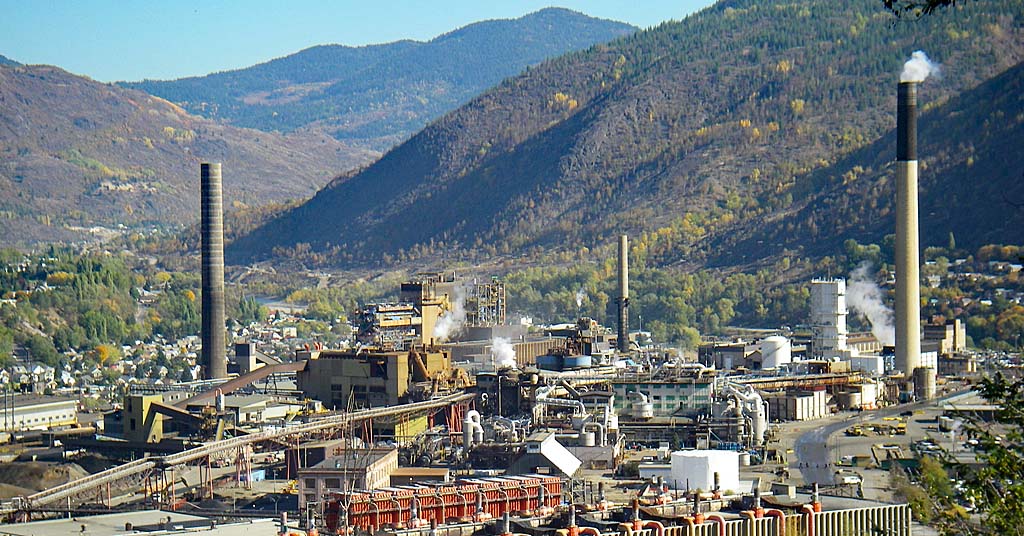By Dac Collins. July 25, 2019. Charles Darwin once said, “It is not the strongest of the species that survives, nor the most intelligent, but the one most responsive to change.”
So how do we as a species respond to the existential threat of a changing climate? We adapt. We innovate. And sometimes — yes, it’s rare but it happens — we even set our political differences aside momentarily and agree on ways to move forward.
The passage of Washington’s Senate Bill 5588 is an example of one of those rare moments. Introduced by a Republican Senator and signed into law by a Democratic presidential candidate, SB5588 passed both houses of the state legislature unanimously in April. The bill gives Public Utility Districts throughout the state the authority to produce, distribute and sell renewable hydrogen.
Forging new markets
“We’re pretty excited,” says Gary Ivory, General Manager of the Douglas County Public Utility District in central Washington. “Not much legislation moves through our state with unanimous approval, so we’re pretty excited about that.”
Ivory testified in favor of the bill during a public hearing in March, and he says the PUD is already working on a project to produce renewable hydrogen using the hydroelectric power generated from Wells Dam on the Columbia River. He says that although the market for renewable hydrogen in Washington State is limited, he anticipates that will change over the next couple of decades as the country transitions to a renewable, carbon-free energy economy.

Located 30 miles downstream of Chief Joseph Dam, Wells Dam is owned and operated by Douglas County PUD. The dam has ten generating units capable of producing roughly 840 megawatts of electricity. Photo courtesy of Douglas County PUD
“We’re trying to forge a new market,” Ivory says. “And we’re moving into ground that hasn’t been plowed before.”
The project that Ivory and his team at the PUD are currently developing is known as a “power-to-gas” project, and it would require the installation of a small-scale, two to three megawatt electrolyzer. (To put that into perspective, one average megawatt is enough electricity to power roughly 750 homes.) The district would use the electrolyzer to convert some of the electricity generated by Wells Dam to hydrogen gas, which could then be sold as part of an offtake agreement.
Referring to those potential buyers, Ivory says, “Some of the people that have approached us would be using it for vehicle fuel…and there are some industrial users [here] in the Northwest that are already buying hydrogen.”
“We project that most of this hydrogen [gas] will be used in the Northwest, and that’s our hope,” he continues. “But that remains to be seen.”
That’s because there are currently no hydrogen fueling stations in either Washington or Oregon. Of the 41 publicly available hydrogen stations located in the United States, all but one are located in California. (Hawaii opened its first and only hydrogen fueling station in Honolulu in July of last year.)
This hasn’t kept Ivory from looking ahead, however. He says that if their power-to-gas project is successful, the PUD might be able to develop some of those facilities on its own.
Looking to the future
“If you look way out down the road,” he explains, “our vision may be to power our customers’ vehicles with this hydrogen.”
And those vehicles, by the way, already exist. Toyota unveiled the hydrogen-powered Mirai (Japanese for “future”) in 2014, and began selling the vehicles exclusively in California back in 2015. Since then, residents of California and Hawaii have purchased more than 5,600 Mirai’s.
Other auto manufacturers, including Honda and Hyundai, are also producing hydrogen fuel cell vehicles, which use hydrogen gas to power an electric motor and produce only heat and water as a byproduct. That means no tailpipes and zero carbon emissions.
“We’re interested in fueling our own fleet vehicles as well,” Ivory adds. “So one of our next steps after getting our electrolyzer up and running would be to have a fueling station so we can fuel some of our own vehicles.”
This would serve as “proof of concept,” he says, and would show “that these hydrogen vehicles are actually viable.”
But before the utility can even consider building Washington’s first hydrogen fueling station, it has to invest in an electrolyzer and all of the associated equipment — which, according to Ivory, will cost between $3 and $6 million. He says that money will come from their general operating funds, and explains that since the passage of SB5588 in April, the PUD has been going through a financial review of the project.
“And you’re the first to hear this,” he says, “but the utility will likely release a bid for electrolyzers next month.”
If and when the PUD decides to purchase an electrolyzer and branch into renewable hydrogen production, Ivory says the project would increase the overall efficiency of their system and lower the overall costs of power production. He explains that the way Wells Dam currently operates, the generating units are adjusted every four seconds depending on the demands of the grid. This creates a lot of wear-and-tear on the units, and these maintenance costs are reflected in the price of electricity. With the addition of an electrolyzer, he says, “we would be able to keep [the units] at a constant rate rather than ramping them up or down.”
As an added bonus, Ivory says the profits generated by renewable hydrogen sales would be funneled back into the PUD, thereby benefitting local ratepayers and demonstrating that renewable, carbon-free energy is both sensible and profitable.
*This is the second article in a series of articles about renewable hydrogen. In the first article, we spoke with Ken Dragoon, executive director of the Renewable Hydrogen Alliance, about the concept of storing surplus renewable energy as hydrogen gas.










